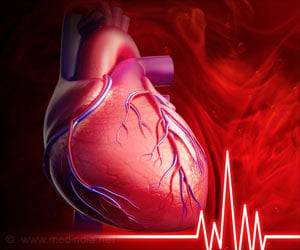E-Tattoo placed on the palm can detect mental stress and help individuals struggling with mental illness.
- When the body is reacting to an emotion, like anxiety, sweat is released from the apocrine glands
- The palms of the hands contain abundant sweat glands
- Recent research //shows that a device placed on the palm called an ‘e-tattoo’ attached to a wearable device like a smartwatch can be used to monitor elevated levels of stress
Innovations in Electrodermal Activity Data Collection and Signal Processing: A Systematic Review
Go to source). The existing sweat measurement technology is cumbersome, unreliable, and can contribute to social stigma by placing visible sensors on conspicuous body regions.
Graphene e-tattoos for unobstructive ambulatory electrodermal activity sensing on the palm enabled by heterogeneous serpentine ribbons
Go to source).
Non-invasive Methods of Measuring Stress
For decades, electrodermal activity (EDA), a.k.a. galvanic skin response (GSR), has been widely used as a quantitative index of mental stress accessible through non-invasive means (3✔ ✔Trusted SourceAdvances in Electrodermal Activity Processing with Applications for Mental Health
Go to source).
Ultrathin, skin-soft wearable electronics called e-tattoos have demonstrated superior skin conformability, mechanical and even optical imperceptibility, and long-term stability for monitoring various physiological signals, such as electrophysiology, skin hydration, temperature, motion, and chemical biomarkers (4✔ ✔Trusted Source
Multilayered electronic transfer tattoo that can enable the crease amplification effect
Go to source).
“It’s so unobstructive that people sometimes forget they had them on, and it also reduces the social stigma of wearing these devices in such prominent places on the body”, researchers said.
Graphene has been a favorite material because of how thin it is and how well it measures the electrical potential of the human body, leading to very accurate readings.
However, such ultra-thin materials can’t handle much, if any strain. So that makes applying them to parts of the body that include a lot of movement, such as the palm/wrist, challenging.
Other researchers have tried similar methods using nanometer-thick straight-line ribbons to connect the tattoo to a reader, but they couldn’t handle the strain of constant movement.
References:
- Innovations in Electrodermal Activity Data Collection and Signal Processing: A Systematic Review - (https://pubmed.ncbi.nlm.nih.gov/31952141/)
- Graphene e-tattoos for unobstructive ambulatory electrodermal activity sensing on the palm enabled by heterogeneous serpentine ribbons - (https://www.nature.com/articles/s41467-022-34406-2)
- Advances in Electrodermal Activity Processing with Applications for Mental Health - (https://www.researchgate.net/publication/310596734_Advances_in_Electrodermal_Activity_Processing_with_Applications_for_Mental_Health)
- Multilayered electronic transfer tattoo that can enable the crease amplification effect - (https://www.science.org/doi/10.1126/sciadv.abe3778)
Source-Medindia












